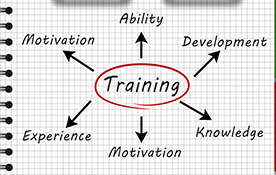This article has a strange title, right? Your employees aren’t like a faucet. My dad always used to say that. It wasn’t a concept I grasped immediately early in my career. However, I’ve come to realize how truly important it is. As the decision maker in your shop, there are many levers and knobs you can turn to try to get different results and metrics. However, your workforce should not be one of them.
In the shop environment, slips, trips and falls seem inevitable. The good news, though, is that shops can prevent many of these situations, along with the associated injuries that increase workers’ compensation costs and employee absences. If you walk around the shop and look with a critical eye, you can start reducing accidents today with some serious attention to detail.

Oct. 1 will mark the deadline retail-based merchants can switch to the “EMV,” or “chip card,” credit card equipment without facing potential fraud liability. EMV, which stands for Europay, Mastercard, Visa, was created to stop duplicate card fraud. In attempt to thwart fraud, the EMV chip creates a one-time sale token related to a specific purchase that cannot be duplicated.

In today’s digital workplace, few issues cause more confusion than social media. Numerous laws are relevant to social media, ranging from Title VII to the Fair Credit Reporting Act to state-specific laws barring requests for applicants’ personal passwords. However, employers can navigate the social media minefield by identifying and addressing the risks.

As I teach all of my clients, effectively improving an organization’s sales and customer service effort should begin with an honest evaluation of the company’s current performance to establish a baseline from which improvements can be addressed and measured. One of the best ways to clearly gauge current performance is to perform a SWOT analysis.

In today’s cut-throat business climate, the pressure to generate profits quickly is often unrelenting and intense. From accommodating anxious stakeholders and contending with new competitors that seemingly surface by the hour to providing good service to a varied customer base and maintaining relationships with vendors and business partners, the daily grind is complex.
As most repair shops already realize, paying their employees involves much more than simply writing a check. Business owners must calculate tax payments, monitor hundreds of state and local jurisdictional requirements, and keep up with new-hire reporting, quarterly and annual tax returns, direct deposits and issuing W-2s.





